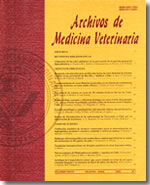Follicular atresia in teleost fish: a review
Main Article Content
Abstract
Many fish species with economic importance have been heavily exploited, causing the collapse of their fisheries. For this reason, there have been attempts to cultivate fish species for commercial purposes, resulting in varying success. It has been observed that when some species are kept in captivity or under intensive exploitation in its natural environment, they present reproductive dysfunctions that leads to the appearance of follicular atresia. This process is scarcely studied in fish and the characterization by several authors shows differences in nomenclature and criteria that make even more difficult its understanding. The objective of this work is to present a literature review of follicular atresia in fish that will contribute to its understanding and study. The follicular atresia is a degenerative process observed in some oocytes that can occur at any time of its development. The presence of follicular atresia has been associated with normal degenerative conditions due to seasonal changes in the gonadal activity, health disorders or inadequate management conditions in fish culture. It has been suggested that this process is a mechanism that allows the recycling of components and energy. However, in certain species such as puye (Galaxias maculatus) and cutthroat trout (Salmo clarki), among others, it has been noted the presence of follicular atresia with pathological characteristics, in which the yolk reabsorption does not occur causing the hardening of the more developed follicles that leads finally to the female death.

